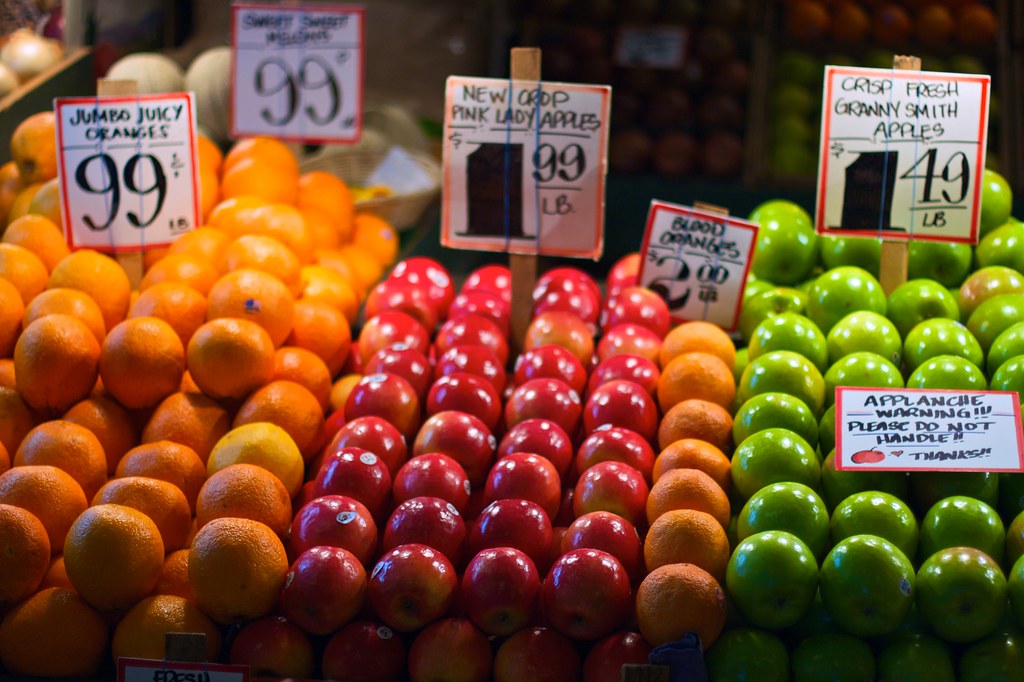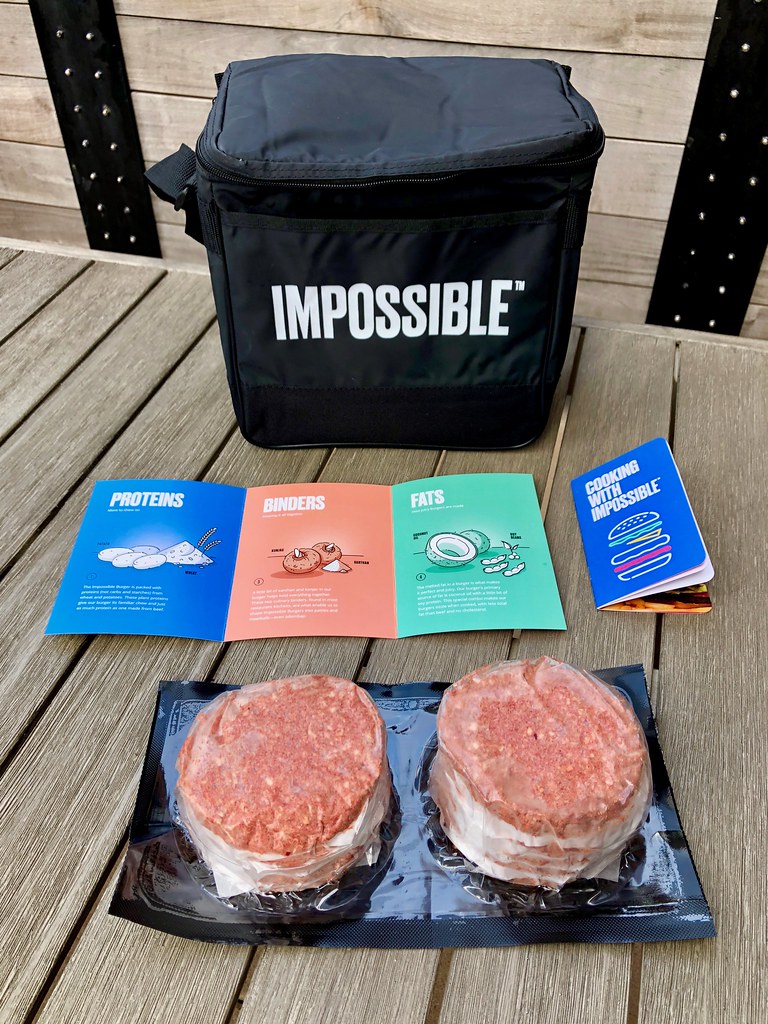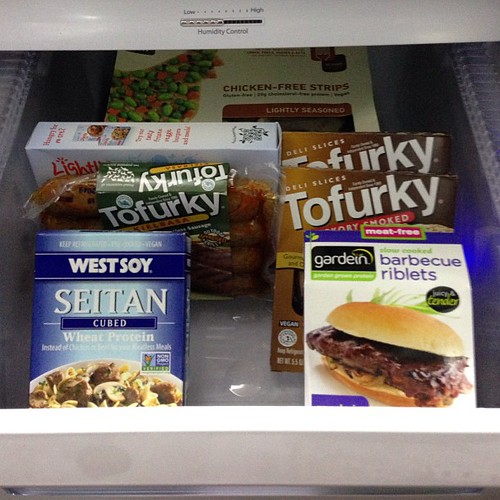3.1.6: Vegetable Nutrition, Storage and Preparation
- Page ID
- 64478
\( \newcommand{\vecs}[1]{\overset { \scriptstyle \rightharpoonup} {\mathbf{#1}} } \)
\( \newcommand{\vecd}[1]{\overset{-\!-\!\rightharpoonup}{\vphantom{a}\smash {#1}}} \)
\( \newcommand{\id}{\mathrm{id}}\) \( \newcommand{\Span}{\mathrm{span}}\)
( \newcommand{\kernel}{\mathrm{null}\,}\) \( \newcommand{\range}{\mathrm{range}\,}\)
\( \newcommand{\RealPart}{\mathrm{Re}}\) \( \newcommand{\ImaginaryPart}{\mathrm{Im}}\)
\( \newcommand{\Argument}{\mathrm{Arg}}\) \( \newcommand{\norm}[1]{\| #1 \|}\)
\( \newcommand{\inner}[2]{\langle #1, #2 \rangle}\)
\( \newcommand{\Span}{\mathrm{span}}\)
\( \newcommand{\id}{\mathrm{id}}\)
\( \newcommand{\Span}{\mathrm{span}}\)
\( \newcommand{\kernel}{\mathrm{null}\,}\)
\( \newcommand{\range}{\mathrm{range}\,}\)
\( \newcommand{\RealPart}{\mathrm{Re}}\)
\( \newcommand{\ImaginaryPart}{\mathrm{Im}}\)
\( \newcommand{\Argument}{\mathrm{Arg}}\)
\( \newcommand{\norm}[1]{\| #1 \|}\)
\( \newcommand{\inner}[2]{\langle #1, #2 \rangle}\)
\( \newcommand{\Span}{\mathrm{span}}\) \( \newcommand{\AA}{\unicode[.8,0]{x212B}}\)
\( \newcommand{\vectorA}[1]{\vec{#1}} % arrow\)
\( \newcommand{\vectorAt}[1]{\vec{\text{#1}}} % arrow\)
\( \newcommand{\vectorB}[1]{\overset { \scriptstyle \rightharpoonup} {\mathbf{#1}} } \)
\( \newcommand{\vectorC}[1]{\textbf{#1}} \)
\( \newcommand{\vectorD}[1]{\overrightarrow{#1}} \)
\( \newcommand{\vectorDt}[1]{\overrightarrow{\text{#1}}} \)
\( \newcommand{\vectE}[1]{\overset{-\!-\!\rightharpoonup}{\vphantom{a}\smash{\mathbf {#1}}}} \)
\( \newcommand{\vecs}[1]{\overset { \scriptstyle \rightharpoonup} {\mathbf{#1}} } \)
\( \newcommand{\vecd}[1]{\overset{-\!-\!\rightharpoonup}{\vphantom{a}\smash {#1}}} \)
\(\newcommand{\avec}{\mathbf a}\) \(\newcommand{\bvec}{\mathbf b}\) \(\newcommand{\cvec}{\mathbf c}\) \(\newcommand{\dvec}{\mathbf d}\) \(\newcommand{\dtil}{\widetilde{\mathbf d}}\) \(\newcommand{\evec}{\mathbf e}\) \(\newcommand{\fvec}{\mathbf f}\) \(\newcommand{\nvec}{\mathbf n}\) \(\newcommand{\pvec}{\mathbf p}\) \(\newcommand{\qvec}{\mathbf q}\) \(\newcommand{\svec}{\mathbf s}\) \(\newcommand{\tvec}{\mathbf t}\) \(\newcommand{\uvec}{\mathbf u}\) \(\newcommand{\vvec}{\mathbf v}\) \(\newcommand{\wvec}{\mathbf w}\) \(\newcommand{\xvec}{\mathbf x}\) \(\newcommand{\yvec}{\mathbf y}\) \(\newcommand{\zvec}{\mathbf z}\) \(\newcommand{\rvec}{\mathbf r}\) \(\newcommand{\mvec}{\mathbf m}\) \(\newcommand{\zerovec}{\mathbf 0}\) \(\newcommand{\onevec}{\mathbf 1}\) \(\newcommand{\real}{\mathbb R}\) \(\newcommand{\twovec}[2]{\left[\begin{array}{r}#1 \\ #2 \end{array}\right]}\) \(\newcommand{\ctwovec}[2]{\left[\begin{array}{c}#1 \\ #2 \end{array}\right]}\) \(\newcommand{\threevec}[3]{\left[\begin{array}{r}#1 \\ #2 \\ #3 \end{array}\right]}\) \(\newcommand{\cthreevec}[3]{\left[\begin{array}{c}#1 \\ #2 \\ #3 \end{array}\right]}\) \(\newcommand{\fourvec}[4]{\left[\begin{array}{r}#1 \\ #2 \\ #3 \\ #4 \end{array}\right]}\) \(\newcommand{\cfourvec}[4]{\left[\begin{array}{c}#1 \\ #2 \\ #3 \\ #4 \end{array}\right]}\) \(\newcommand{\fivevec}[5]{\left[\begin{array}{r}#1 \\ #2 \\ #3 \\ #4 \\ #5 \\ \end{array}\right]}\) \(\newcommand{\cfivevec}[5]{\left[\begin{array}{c}#1 \\ #2 \\ #3 \\ #4 \\ #5 \\ \end{array}\right]}\) \(\newcommand{\mattwo}[4]{\left[\begin{array}{rr}#1 \amp #2 \\ #3 \amp #4 \\ \end{array}\right]}\) \(\newcommand{\laspan}[1]{\text{Span}\{#1\}}\) \(\newcommand{\bcal}{\cal B}\) \(\newcommand{\ccal}{\cal C}\) \(\newcommand{\scal}{\cal S}\) \(\newcommand{\wcal}{\cal W}\) \(\newcommand{\ecal}{\cal E}\) \(\newcommand{\coords}[2]{\left\{#1\right\}_{#2}}\) \(\newcommand{\gray}[1]{\color{gray}{#1}}\) \(\newcommand{\lgray}[1]{\color{lightgray}{#1}}\) \(\newcommand{\rank}{\operatorname{rank}}\) \(\newcommand{\row}{\text{Row}}\) \(\newcommand{\col}{\text{Col}}\) \(\renewcommand{\row}{\text{Row}}\) \(\newcommand{\nul}{\text{Nul}}\) \(\newcommand{\var}{\text{Var}}\) \(\newcommand{\corr}{\text{corr}}\) \(\newcommand{\len}[1]{\left|#1\right|}\) \(\newcommand{\bbar}{\overline{\bvec}}\) \(\newcommand{\bhat}{\widehat{\bvec}}\) \(\newcommand{\bperp}{\bvec^\perp}\) \(\newcommand{\xhat}{\widehat{\xvec}}\) \(\newcommand{\vhat}{\widehat{\vvec}}\) \(\newcommand{\uhat}{\widehat{\uvec}}\) \(\newcommand{\what}{\widehat{\wvec}}\) \(\newcommand{\Sighat}{\widehat{\Sigma}}\) \(\newcommand{\lt}{<}\) \(\newcommand{\gt}{>}\) \(\newcommand{\amp}{&}\) \(\definecolor{fillinmathshade}{gray}{0.9}\)Nutrition
Most vegetables are more than 80 percent water; the remaining portions consist of carbohydrates (primarily starches) and small amounts of protein and fat. The relative lack of protein and fat makes most vegetables especially low in calories.
Much of a vegetable's physical structure is provided by generally indigestible substances such as cellulose and lignin, also known as fiber. This fiber produces the characteristic stringy, crisp or fibrous textures associated with vegetables.
Vegetables are also a good source of vitamins and minerals. Care must be taken during preparation to preserve their nutritional content, however. Once peeled or cut, vegetables lo se nutrients to the air or to any liquid in which they are allowed to soak. Vitamins are concentrated just under the skin, so peel vegetables thinly, if at all.
USDA Organic Designation
Great strides in agriculture have been made during the past two centuries. Pesticides, fungicides, and herbicides now eliminate or control pests that once would have devoured, ruined or choked crops. Chemical fertilizers increase the yields of many of the world's staples. However, not everyone has greeted these developments with open arms.
During the past few decades, scientific and medical investigators have documented, or at least suggested, health risks associated with certain synthetic pesticides, fertilizers, and other products. These findings have led to a renewed interest in a now multi-billion-dollar-a-year back-to-the-basics approach to farming organic farming. Specialty farms, orchards, and even wineries now offer organically grown products (or, in the case of wineries, wines made from organically grown grapes). These products come with few, if any, intentional additives and should be free of any incidental additives. Proponents argue that these products are better for you and better for the health of the farm workers.
The U.S. Department of Agriculture regulates the production and labeling of organically grown foods. It requires that any natural food labeled "100 percent organic" must contain only organic ingredients-that is, those grown and manufactured without the use of added hormones, pesticides, synthetic fertilizers, and so on; soil cannot have been treated with unapproved synthetics for three years for a crop to be called organic. To be labeled organic, or to display the USDA organic seal, processed foods must contain at least 95 percent organic ingredients by weight. Processed foods with 70 to 95 percent organic ingredients may be labeled "made with organic ingredients"; processed foods with less than 70 percent organic ingredients may list those ingredients on the information panel but may not use the term organic anywhere on the front of the package.
Purchasing and Storing Fresh Vegetables
Fresh vegetables should be selected according to seasonal availability. Using a vegetable at the peak of its season has several advantages: Price is at its lowest, selection is at its greatest and the vegetable's color, flavor and texture are at their best.
Grading
The USDA has a voluntary grading system for fresh vegetables traded on wholesale markets. The system is based on appearance, condition, and other factors affecting waste or eating quality.
Grades for all vegetables include, in descending order of quality, U.S. Extra Fancy, U.S. Fancy, U.S. Extra No. 1 , and U.S. No.1. There are also grades that apply only to specific vegetables, for example, U.S. No. 1 Boilers for onions. Consumer or retail grading is currently required only for potatoes, carrots, and onions. It uses alphabetical listings, with Grade A being the finest.
Purchasing
Fresh vegetables are old by weight or count. They are packed in cartons referred to as cases, lugs, bushels, flats or crates. The weight or count packed in each of these containers varies depending on the size and type of vegetable as well as the packer. For example, celery is packed in 55-pound cartons containing 18 to 48 heads, depending on the size of each head.
Some of the more common fresh vegetables (for example, onions, carrots, celery, and lettuce) can be purchased from wholesalers trimmed, cleaned, and cut according to your specifications. Although the unit price will be higher for diced onions than for whole onions, for example, the savings in time, labor, yield loss and storage space can be substantial. Processed vegetables may suffer a loss of nutrients, moisture, and flavor.
Ripening
Although vegetables do not ripen in the same manner as fruits, they do continue to breathe (respire) after harvesting. The faster the respiration rate, the faster the produce ages or decays. This decay results in wilted leaves and dry, tough or woody stems and stalks.
Respiration rates vary according to the vegetable variety, its maturity at harvest and its storage conditions after harvest.
Ripening proceeds more rapidly in the presence of ethylene gas. Ethylene gas is emitted naturally by fruits and vegetables and can be used to encourage further ripening in some produce, especially fruit-vegetables such as tomatoes. Items harvested and shipped when mature but green (unripe) can be exposed to ethylene gas to induce color development (ripening) just before sale.
Storing
Some fresh vegetables are best stored at cool temperatures, between 40°F and 60°F (4°C and 16°C), ideally in a separate produce refrigerator. These include winter squash, potatoes, onions, shallots, and garlic. If a produce refrigerator is not available, store these vegetables at room temperature in a dry area with good ventilation. Do not store them in a refrigerator set at conventional temperatures. Colder temperatures convert the starches in these vegetables to sugars, changing their texture and flavor.
Most other vegetables benefit from cold storage at temperatures between 34°F and 40°F (2°C and 4°C) with relatively high levels of humidity. Greens and other delicate vegetables should be stored away from apples, tomatoes, bananas, and melons, as the latter give off a great deal of ethylene gas.
Preservation techniques are designed to extend the shelf life of vegetables. These methods include irradiation, canning, freezing, and drying. Except for drying, these techniques do not substantially change the vegetable's texture or flavor. Canning and freezing can also be used to preserve cooked vegetables.
Waxing
- Use the links bellow (including the image) to explore why produce is waxed.
"shiny fruit" by Bobbytee is licensed under CC BY-NC-SA 2.0.
Irradiated Vegetables
The irradiation process uses ionizing radiation (usually gamma rays of cobalt 60 or cesium 137) to sterilize foods. When foods are subjected to radiation, parasites, insects and bacteria are destroyed, ripening is slowed and sprouting is prevented. Irradiation works without a noticeable increase in temperature; consequently, the flavor and texture of fresh foods are not affected. Some nutrients, however, may be destroyed. Irradiated vegetables do not need to be sprayed with post-harvest pesticides, and they have an extended shelf life.
The FDA classifies irradiation as a food additive. Although irradiation is not yet approved for all foods, grains, fruits and vegetables may be treated with low-dose radiation. Irradiated foods must be labeled "Treated with radiation" or "Treated by irradiation."
Hydroponics: Working Water
Hydroponics is the science of growing plants without soil in water. Plants are grown in an inert medium such as gravel, peat, sand, or other sterile material.
Nutrients are distributed in water that is circulated over the plant's roots. In a hydroponic farm, the temperatures and light are controlled to maximize production. Because hydroponic farms are indoors, plants can be grown in any climate; both Canada and Holland are major producers of vegetables grown under these conditions.
Canned Vegetables
Canned vegetables are the backbone of menu planning for many food service operations. In commercial canning, raw vegetables are cleaned and placed in a sealed container, then subjected to high temperatures for a specific period. Heating destroys the microorganisms that cause spoilage, and the sealed environment created by the can eliminates oxidation and retards decomposition. However, the heat required by the canning process also softens the texture of most vegetables and alters their nutritional content; many vitamins and minerals may be lost through the canning process. Green vegetables may also suffer color loss, becoming a drab olive hue.
Canned vegetables are graded by the USDA as U.S. Grade A or Fancy, U.S. Grade B or Extra-Select, and U.S. Grade C or Standard. U.S. Grade A vegetables must be top quality, tender, and free of blemishes. U.S. Grade C vegetables may lack uniformity or flavor but can be used in casseroles or soups if cost is a concern.
Canned vegetables are purchased in cases of standard-sized cans. Canned vegetables can be stored almost indefinitely at room temperature. Once a can is opened, any unused contents should be transferred to an appropriate storage container and refrigerated. Cans with bulges should be discarded immediately, without opening.
Frozen Vegetables
Frozen vegetables are almost as convenient to use as canned. However, they often require some cooking, and expensive freezer space is necessary if an inventory is to be maintained. Regardless, freezing is a highly effective method for preserving vegetables. It severely inhibits the growth of microorganisms that cause spoilage without destroying many nutrients. Generally, green vegetables retain their color, although the appearance and texture of most vegetables may be somewhat altered because of their high water content: Ice crystals form from the water in the cells and burst the cells walls.
Some vegetables are available individually quick-frozen (IQF). This method employs blasts of cold air, refrigerated plates, liquid nitrogen, liquid air or other techniques to chill the vegetables quickly. Speeding the freezing process can greatly reduce the formation of ice crystals.
Combinations of vegetables, as well as vegetables with seasonings and sauces, are available frozen. Some frozen vegetables are raw when frozen; others are blanched before freezing so that the final cooking time is reduced. Many others are fully cooked before freezing and need only to be thawed or heated for service. Frozen vegetables generally do not need to be thawed before being heated. Once thawed or cooked, they should be stored in the refrigerator and reheated in the same manner as fresh vegetables. Do not refreeze previously frozen vegetables.
Frozen vegetables are graded in the same manner as canned vegetables. They are usually pack d in cases containing 1- to 2-pound (450- to 900-gram) boxes or bags. All frozen vegetables should be sealed in moisture-proof wrapping and kept at a constant temperature of 0°F (-18°C) or below. Temperature fluctuations can draw moisture from the vegetables, causing poor texture and flavor loss. Adequate packaging also prevents freezer burn, an irreversible change in the color, texture and flavor of frozen foods.
Dried Vegetables
Except for beans peas, peppers, mushrooms, and tomatoes, few vegetables are commonly preserved by drying. Unlike other preservation methods, drying dramatically alters flavor, texture and appearance. The loss of moisture concentrates flavors and sugars and greatly extends shelf life.
Imitation Meats:
Use the images below to explore imitation meats:
***"Impossible Burger Plant-Based Meat" by Scott Beale is licensed under CC BY-NC-ND 2.0. ***"My Vegan 'Meat' Drawer" by valeehill is licensed under CC BY-ND 2.0.
Tofu vs Tempe:
"Raw tempeh" by SaucyGlo is licensed under CC BY 2.0.
Acid/Alkali Reactions
The acid or alkali content of the cooking liquid affects the texture and color of many vegetables. This is of greater concern with moist-heat cooking methods, but it is also a consideration with city-heat cooking methods, as they often call for blanched or parboiled vegetables.
Texture
The acidity or alkalinity of the vegetable's cooking liquid influences the finished product's texture. If an acid such as lemon juice, vinegar or wine is added to the liquid for flavoring, the vegetable will resist softening and will require a longer cooking time. On the other hand, an alkaline cooking medium will quickly soften the vegetable's texture and may cause it to become mushy. Alkalinity also causes nutrient loss (especially thiamin) and may impart a bitter flavor. Alkalinity can be caused by tap water, detergent residue on utensils or the addition of baking soda (a base) to the cooking liquid. (You could add, for example, 1/8 teaspoon [0.6 milliliter) baking soda per cup [225 milliliters] of beans to speed the softening of dried beans.)
Color
The acidity or alkalinity of the liquid also affects the plant's pigments, causing both desirable and undesirable color changes. There are three principal pigment categories: chlorophyll, carotenoid, and flavonoid. A plant's unique color is the result of a combination of these pigments. Chlorophyll pigments predominate in green vegetables such as spinach, green beans and broccoli. Carotenoid pigments predominate in orange and yellow vegetables such as carrots, tomatoes, reel peppers and winter squashes. Flavonoid pigments are predominate in purple and white vegetables such as red cabbage, beets and cauliflower.
Initially, as vegetables are cooked, their original colors intensify. Exposure to heat makes pigments, especially chlorophyll, appear brighter. Exposure to acids and bases affects both chlorophyll and flavonoid pigments. Acids will gradually turn green vegetables an olive-drab color, while a slight alkalinity promotes chlorophyll retention. The opposite occurs with vegetables containing flavonoids: They retain desirable colors in a slightly acidic environment while losing colors in an alkaline one. (Carotenoids are not affected by either acidity or alkalinity.) Color changes alone do not affect flavor, but the altered appearance can make the product so visually unappealing as to become inedible.
Colors also change as the naturally occurring acids in vegetables are released during cooking. If the cooking pan is kept covered, the acids can concentrate, creating richer flavonoid pigments but destroying chlorophyll pigments.
Thus, if color is the one and only concern, vegetables with a high amount of chlorophyll should be cooked in an alkaline liquid, and vegetables, with a high amount of flavonoids should be cooked in an acidic liquid. Remember, the improvement in color usually comes at the expense of texture and nutrients.
Acid & Alkali Reactions
| Effects of Acid on: | Effect of Alkali on: | |||||
|---|---|---|---|---|---|---|
| VEGETABLE | PIGMENT FAMILY | COLOR | TEXTURE | COLOR | TEXTURE | COOK COVERED |
| Spinach, broccoli | chlorophyll | drab olive green | firm | bright green | mushy | no |
| Carrots, rutabagas | carotenoid | no change | firm | no change | mushy | no difference |
| Cauliflower | flavonoid | white | firm | yellow | mushy | yes |
| Red cabbage | flavonoid | red | firm | blue | mushy | yes |
*Alkalinity always causes a loss of thiamin and other nutrients
Guidelines for Vegetable Cookery
The following general guidelines for vegetable cookery should be considered regardless of the cooking method used:
- Vegetables should be carefully cut into uniform shapes and sizes to promote even cooking and provide an attractive finished product.
- Cook vegetables for as short a time as possible to preserve texture, color and nutrients.
- Cook vegetables as close to service time as possible. Holding vegetables in a steam table continues to cook them.
- When necessary, vegetables may be blanched in advance, refreshed in ice water and refrigerated. They can then be reheated as needed.
- White and red vegetables (those with flavonoid pigments) may be cooked with a small amount of acid such as lemon juice, vinegar or white wine to help retain their color.
- When preparing an assortment of vegetables, cook each type separately, and then combine them. Otherwise, some items would become overcooked in the time required to properly cook others.






